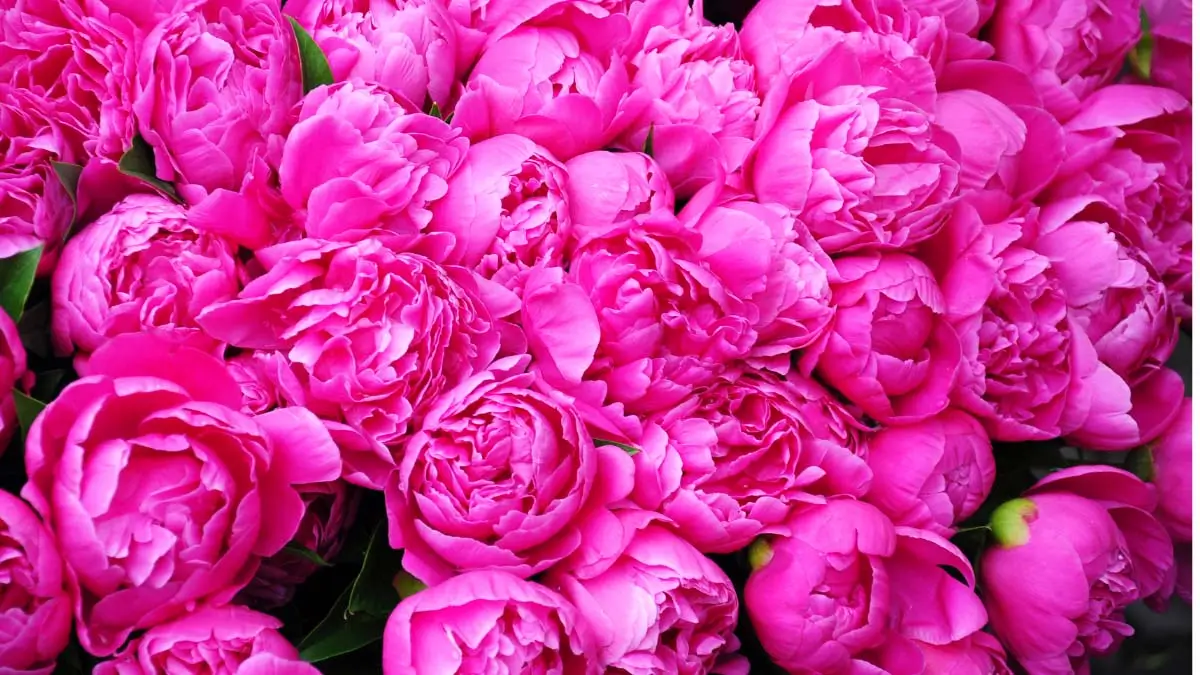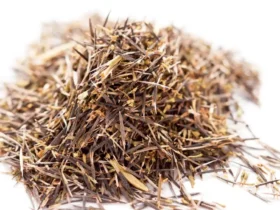Pink Peony is a popular flowering plant known for its vibrant pink petals. In addition to its stunning visual appeal, Pink Peony also has a pleasant fragrance.
The Pink Peony
The Pink Peony is a captivating flower that is cherished for its exquisite beauty. Known for its vibrant hues and delicate petals, this bloom has been captivating hearts for centuries. In this blog post, we will delve into the fascinating world of the Pink Peony, exploring its symbolic significance and unique botanical characteristics.
A Symbol Of Beauty
The Pink Peony is widely recognized as a symbol of beauty and grace. With its lush blooms and soft color palette, this flower embodies femininity and elegance. In many cultures, the Pink Peony is associated with romance, love, and beauty, making it a popular choice for weddings, anniversaries, and other special occasions.
Its alluring fragrance and captivating appearance make the Pink Peony a sought-after choice for floral arrangements and bouquets. Whether used as a standalone flower or combined with other blossoms, the Pink Peony adds a touch of romantic charm to any setting.
Botanical Characteristics
The Pink Peony, scientifically known as Paeonia lactiflora, is a perennial flowering plant that belongs to the Paeoniaceae family. Native to Asia, Europe, and North America, this plant thrives in temperate climates and is highly prized for its stunning ornamental value.
Here are some key botanical characteristics of the Pink Peony:
- Growth: The Pink Peony grows as a herbaceous perennial, meaning it dies back to the ground in winter and regrows from its roots in spring.
- Size: The plant typically reaches a height of 2 to 4 feet (60 to 120 centimeters) and spreads approximately 3 feet (90 centimeters) wide.
- Flowers: The Pink Peony produces large, lush blossoms that range in color from pale pinks to deep shades of magenta. Each flower consists of multiple layers of delicate petals, forming a voluminous and visually striking bloom.
- Foliage: The plant’s foliage is a brilliant green, with deeply divided, lance-shaped leaves that add to its overall charm.
- Propagation: The Pink Peony can be propagated through division, where the plant’s root clumps are separated and replanted in well-draining soil.
It is important to note that while the Pink Peony is renowned for its beauty, it requires proper care and maintenance to thrive. Adequate sunlight, regular watering, and well-draining soil are essential for the health and longevity of this captivating flower.

Cultural Significance
Pink peonies are stunning flowering plants that are deeply admired for their captivating beauty and delicate fragrance. These exquisite flowers have not only caught the attention of gardeners and flower enthusiasts but have also made their way into art, literature, and various cultures, becoming a symbol of immense cultural significance.
In Art And Literature
The elegance of pink peonies has inspired countless artists and writers to capture their charm in paintings, poems, and novels. In the world of art, these enchanting blooms have been portrayed in meticulous brush strokes, with their lush petals and vibrant hues serving as a muse for many renowned painters. Artists have sought to depict the captivating beauty of pink peonies, showcasing their intricate details and breathtaking allure.
Just as the art world has embraced the allure of pink peonies, these flowers have also found their place in literature. Poets have penned verses dedicated to the mesmerizing beauty and captivating fragrance of pink peonies. Descriptions of their delicate petals and the way they softly unfurl have filled the pages of many novels, immersing readers in the magical world of these romantic blooms.
Symbolism In Different Cultures
Across various cultures, pink peonies hold significant symbolism and are associated with different virtues and beliefs. In Chinese culture, for instance, the peony represents prosperity, wealth, and honor. It is considered the king of flowers and holds a deep spiritual meaning, symbolizing grace and beauty.
In Japanese culture, peonies are regarded as symbols of nobility, bravery, and honor. These flowers are often depicted in traditional art forms such as ukiyo-e prints and kimono designs, reflecting their esteemed position in Japanese aesthetics.
The cultural significance of pink peonies is not limited to Asia. In Western culture, these flowers are often associated with romance, beauty, and femininity. They are commonly used in bridal bouquets and are a popular choice for romantic arrangements, evoking a sense of love, elegance, and grace.
Growing And Caring For Pink Peony
Pink peonies are beloved for their delicate, fluffy blooms and enchanting fragrance. With the right growing conditions and care, these stunning flowers can thrive in any garden. From choosing the perfect location to providing the right soil and water, here’s how you can ensure your pink peonies bloom in all their glory.
Choosing The Right Location
When selecting a location for planting pink peonies, choose a spot that receives full sun to partial shade. Ensure that the area is well-drained and provides protection from strong winds. This will help the peonies to establish strong roots and encourage healthy growth.
Soil And Water Requirements
Pink peonies thrive in well-drained, loamy soil with a slightly acidic to neutral pH. Ensure the soil is rich in organic matter to provide necessary nutrients. Water the plants deeply, but be mindful not to overwater, as this can lead to root rot. Aim to keep the soil evenly moist, especially during the active growth and blooming season.
Planting And Maintenance Tips
- When planting, dig a hole that is twice the width of the peony root and amend the soil with compost.
- Plant the peony roots no more than 2 inches below the soil surface and provide support for the heavy blooms as they grow.
- Deadhead faded blooms to encourage continued flowering and apply a balanced fertilizer in early spring to support healthy growth.
- Mulch around the plants to retain moisture and suppress weeds, and divide overcrowded clumps every 5-10 years to promote vigor and enhance blooming.

Varieties Of Pink Peony
Among the stunning selection of peonies available, the pink varieties are particularly sought after for their delicate beauty and romantic allure. Pink peonies come in a range of shades, from soft pastels to vibrant hues, making them a versatile choice for any garden or floral arrangement. In this article, we will explore the different shades of pink and the various hybrid species that offer unique characteristics and enchanting blooms.
Shades Of Pink
Pink peonies showcase an exquisite array of shades that cater to different preferences and design aesthetics. The distinct tones of pink add depth and charm to any setting. Here are some popular shades of pink peonies:
- Soft Pink: This delicate hue epitomizes femininity and elegance, creating a dreamy and serene atmosphere.
- Blush Pink: With its subtle hint of apricot, blush pink peonies exude a touch of warmth and sophistication.
- Coral Pink: This vibrant shade combines the allure of pink with the energetic vibrancy of coral, making it an eye-catching choice.
- Dusty Pink: Dusty pink peonies offer a vintage appeal, with their muted and romantic undertones reminiscent of old-world charm.
- Fuchsia Pink: Bold and striking, fuchsia pink peonies command attention and inject a dramatic pop of color.
Different Hybrid Species
In addition to the various shades, pink peonies also boast different hybrid species, each with its own distinctive characteristics. These hybrid species contribute to the unique shapes, sizes, and blooming habits of pink peonies. Here are some popular hybrid species of pink peonies:
- Herbaceous Hybrid: The herbaceous hybrid species are known for their lush foliage and large, showy blooms. They are the most common type of pink peonies and offer a wide range of pink shades.
- Tree Peony Hybrid: Tree peony hybrids feature woody stems and large, ruffled flowers. They bloom slightly earlier than herbaceous peonies and often possess unique pink hues, such as deep magenta or soft blush.
- Itoh Hybrid: Itoh hybrids are a cross between herbaceous and tree peonies, resulting in a combination of their best characteristics. These pink peonies have sturdy stems, abundant blooms, and come in captivating pink shades.
With the diverse range of shades and hybrid species available, pink peonies offer endless possibilities for creating captivating floral arrangements and providing stunning focal points in any garden. Whether used as cut flowers or grown in your own garden, pink peonies are sure to infuse elegance, romance, and beauty into any environment.
Uses Of Pink Peonies
There are several ways in which pink peonies can be incorporated and utilized. From floral arrangements to medicinal and cosmetic purposes, these gorgeous blooms offer a range of benefits and uses. Let’s explore each of these in detail:
In Floral Arrangements
Pink peonies are often a popular choice for floral arrangements due to their stunning beauty and delicate fragrance. They add a touch of elegance and sophistication to any bouquet or centerpiece. Whether used alone or combined with other flowers, pink peonies create a visually pleasing arrangement that can brighten up any space.
Medicinal And Cosmetic Purposes
Pink peonies have long been valued for their medicinal and cosmetic properties. Their roots contain compounds that have been used in traditional medicine for centuries. These compounds are believed to possess anti-inflammatory and antioxidant properties, making them ideal for treating various health conditions.
When it comes to cosmetic purposes, pink peonies are a favorite ingredient in skincare products. The petals are naturally high in antioxidants and have moisturizing properties, making them great for reducing signs of aging and soothing the skin. Pink peony extracts can be found in various skincare products such as creams, serums, and masks.
For a quick summary of the uses of pink peonies:
- They are sought-after for floral arrangements, adding beauty and fragrance.
- Their roots can be used for traditional medicine due to their anti-inflammatory and antioxidant properties.
- Pink peonies are often included in skincare products for their moisturizing and anti-aging benefits.
In conclusion, pink peonies have a wide range of uses, from enhancing the visual appeal of floral arrangements to providing medicinal and cosmetic benefits. Their versatility and natural beauty make them a sought-after flower in various industries. Whether you’re looking to brighten up a space or take advantage of their health benefits, pink peonies are a fantastic choice.

Seasonal Blooms
Seasonal blooms bring an array of color and fragrance to our surroundings, and there’s nothing quite like the beauty of Pink Peony in full bloom. These delicate and enchanting flowers have a unique charm that captivates nature lovers during its blooming season. Let’s take a closer look at the enchanting Pink Peony and its role as a seasonal bloom.
Springtime Spectacle
The Pink Peony is a showstopper during the spring months. Its vibrant, pink-hued petals create a stunning visual display that signifies the arrival of the new season. As the weather warms and nature begins to awaken, the Pink Peony emerges as a star attraction, bringing joy and beauty to gardens, parks, and floral arrangements.
Extended Blooming Period
Unlike many other seasonal blooms, the Pink Peony boasts an extended blooming period, offering its captivating beauty for an extended duration. This prolonged presence allows admirers to revel in its allure and appreciate its delicate charm for an extended period, making it a highly coveted addition to any floral display.
Pink Peonies In Mythology And Folklore
In mythology and folklore, pink peonies have captivated people with their beauty and symbolism for centuries. These exquisite flowers have had a significant presence in various legends, beliefs, and superstitions, offering a glimpse into the deep-rooted cultural significance they hold.
Mythological Legends
Mythological legends surround pink peonies, depicting them as enchanting flowers with magical qualities. According to Greek mythology, the peony is named after Paeon, a physician to the gods, who used the flower’s roots to heal wounds sustained in battle.
In Chinese mythology, peonies are considered the “King of Flowers” and symbolize honor, prosperity, and romance. It is believed that fairies and nymphs reside in the delicate petals, adding a touch of mysticism to these blooming beauties.
Folk Beliefs And Superstitions
Folk beliefs and superstitions surrounding pink peonies have been passed down through generations, offering insights into cultural practices and beliefs. In some cultures, it is believed that planting peonies near the entrance of one’s home brings good luck, happiness, and protection against negative energy.
Additionally, it is thought that peonies possess the power to ward off evil spirits, ensuring a calm and peaceful environment. Consequently, these beautiful flowers are often incorporated into rituals and ceremonies to bring blessings and positive vibes to the participants.
Furthermore, pink peonys are associated with love and romance, making them popular choices for wedding bouquets and anniversary gifts. Their lush, soft petals symbolize enduring love and prosperity, making them a powerful symbol of affection.
These intriguing connections between pink peonies and mythology, as well as the deeply ingrained folk beliefs and superstitions, demonstrate the profound impact these flowers have on our cultural heritage.
Challenges In Growing Pink Peonies
Growing pink peonies can be a rewarding experience for garden enthusiasts, but it also comes with its fair share of challenges. In order to cultivate healthy and vibrant pink peonies, it is important to understand and address certain key factors. By managing pests and diseases, as well as considering climate and environmental conditions, you can ensure the successful growth of these beautiful flowers.
Pest And Disease Management
Effective pest and disease management is crucial for maintaining the health and vitality of your pink peonies. These flowers can be susceptible to various pests and diseases, including:
- Aphids: Small insects that feed on the sap of the peony plant, causing stunted growth and distorted leaves.
- Botrytis Blight: A fungal infection that leads to brown spots, wilting, and decay of the peony flowers and foliage.
- Leaf Spot: Common fungal diseases that cause dark spots on the leaves, leading to defoliation if left unchecked.
To manage these pests and diseases, it is important to take preventive measures such as:
- Regularly inspecting your plants to catch any infestations or signs of disease early on.
- Practicing good sanitation by removing any fallen leaves or plant debris that could harbor pests or pathogens.
- Using organic or chemical insecticides and fungicides as a last resort, following label instructions carefully.
Climate And Environmental Factors
The climate and environmental conditions of your growing area play a crucial role in the success of pink peonies. These factors include:
| Climate | Environmental Factors |
| Temperature: Pink peonies thrive in USDA hardiness zones 3 to 8, where they experience a cold winter dormancy period. Humidity: High humidity levels can promote the growth of fungal diseases. Proper air circulation is important to prevent this. Rainfall: Excessive rainfall can lead to waterlogged soil, causing root rot. Good drainage is essential for the health of pink peonies. | Sunlight: Peonies require at least six hours of direct sunlight daily for optimal blooming. Soil Quality: Well-draining soil with a pH range of 6.5 to 7 is ideal for pink peonies. Watering: While pink peonies need regular watering, overwatering can be detrimental. Maintaining proper soil moisture is important. |
By understanding and addressing these climate and environmental factors, you can create an optimal growing environment for your pink peonys.

Preserving The Beauty: Pink Peony Care Tips
Preserving the Beauty: Pink Peony Care Tips
Cut Flower Care
For vibrant, long-lasting blooms, it’s essential to cut your pink peonys at the right time. Select the flowers in the early morning or evening and use sharp shears to make a clean, angled cut. Remove any leaves that will sit below the waterline to prevent bacterial growth. Place the stems in a vase filled with fresh water and floral preservative. Change the water every other day and trim the stems at an angle to ensure prolonged freshness.
Storing And Drying Techniques
To keep the peony blooms fresh for longer, store them in a cool area away from direct sunlight and drafts. Alternatively, if you wish to preserve their beauty, consider drying the peonies by hanging them upside down in a dark, well-ventilated space. To prevent wilting, ensure the blooms are fully dry before storing them in airtight containers away from moisture and light.
Frequently Asked Questions Of Pink Peony
How Long Do Pink Peonies Bloom?
Pink peonys typically bloom in the late spring to early summer, lasting for about 7 to 10 days.
What Are The Different Types Of Pink Peonies?
There are several types of pink peonies, including Sarah Bernhardt, Bowl of Beauty, and Festiva Maxima.
How Do I Care For Pink Peonies In My Garden?
To care for pink peonys, make sure they receive at least six hours of sunlight, water them regularly, and provide support for the heavy blooms.
Conclusion
Pink peonies are a timeless symbol of beauty and grace. Their delicate petals and enchanting aroma make them a favorite choice for weddings, celebrations, or simply brightening up a room. With their rich history and cultural significance, these flowers continue to captivate and inspire people around the world.





Leave a Reply